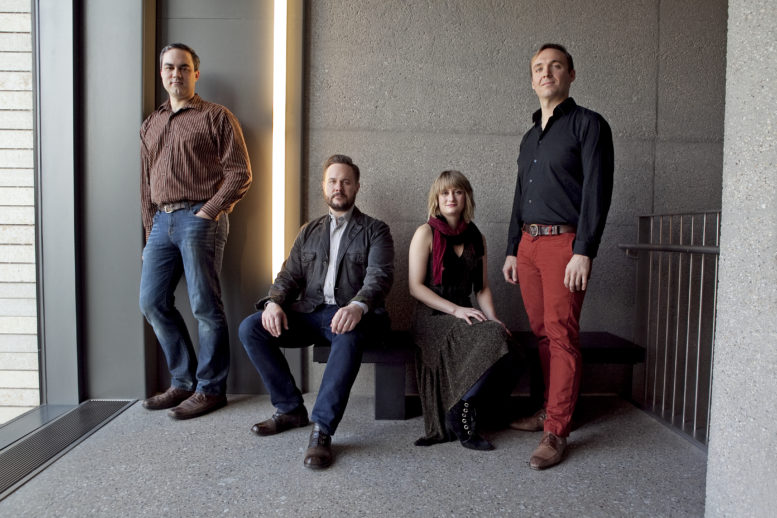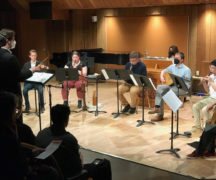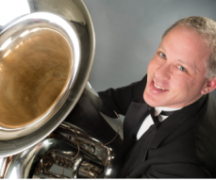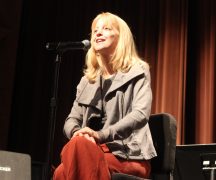By DAVID DUPONT
BG Independent News
No matter the venue, the Spektral Quartet can always be found at the intersection of contemporary music and the storied sounds of the string quartet tradition.
On Monday at 8 p.m. the Chicago-based string quartet will play a Music at the Forefront Concert, presented by the MidAmerican Center for Contemporary Music at Bowling Green State University. The concert will be in Bryan Recital Hall on the campus.
The quartet, said violinist Clara Lyon, is interested in “creative ways of programming traditional repertoire at the same time as being part of the conversation about what’s next.” In some instances that means they will play a string quartet by Beethoven or another classical master on the same program as a newly minted composition.
At Bowling Green, however, Spektral Quartet – Lyon and Austin Wulliman, violins, Doyle Armbrust, viola, and Russell Rolen, cello –is performing two contemporary pieces by Hans Thomalla and Beat Furrer. Both composers, Lyon said, are “heavily influenced by what people would call more traditional classical music, western art music of the 19th and 20th centuries. Both have an encyclopedic knowledge of that musical material, borrow from it occasionally and are very aware of their place in that quartet tradition.”
Still the sound worlds they create are strikingly different.
Thomalla in his Bagatellen, written for Spektral, creates nine short movements out of material culled from classical string quartets. He borrowed what he considered “unremarkable material,” a bit of a viola part from a Haydn quartet or a second violin line from a Mozart quartet. Lyon said the composer was “reticent” to tell even the members of Spektral where the material came from.
Thomalla is also interested in “white noise,” particularly as expressed by the German term “rauschen,” which means “breathy and whispery,” Lyon said. “But it also has a different meaning as intoxicating.” All those meanings fit Bagatellen.
The composer has the string players produce this white noise with a variety of techniques, changing the bow speed and bow pressure “to create different colors and different frequencies.”
As the nine movements – “quick short little things” – start to play out “those musical materials will be much more present. Your ear will be able to identify them as something familiar. Over the course of that he fades out that material. You will hear glimpses of it but it will become more abstract, very fragile.”
Lyon said the second piece on the program, Beat Furrer’s String Quartet No.3 is “a monumental work.”
The single movement is 52 minutes long with no break. The members of the quartet felt it fit well with Thomalla’s Bagatellen and will give American audiences a chance to hear a piece little performed here.
Furrer is “always trying to find new sounds on string instruments and then cataloguing them. … He has this library of sounds that he puts in different combinations like a patchwork quilt. It’s almost like he’s trying to create every possibility of these juxtapositions of sounds,” Lyons said.
“It can be an overwhelming undertaking as a performer and listener,” she said. It calls for a different way of listening. “As a listener you are not really living in or participating in it as you are in a Beethoven quartet. As a listener you’re more observing and experiencing things you don’t expect. … The feeling of the piece is something much more organic as if the motifs he’s using are constantly transforming themselves. It’s like multicell organism that is constantly growing.”
She likened experience of the Furrer quartet to being “in a forest late at night, listening to how noisy and chaotic the forest is.”
Hidden within the textures of the piece is a 16th century chorale. The text of that chorale, Lyon said, speaks of “the night and a sort of loneliness one can feel.”
Lyon, who joined the quartet 18 months ago, said the ensemble got started with informal sessions about seven years ago. At that time the members were all active freelancers on the Chicago new music scene and would get together to play string quartets for fun. As time went on they grew more serious about the quartet and worked to make the ensemble a full-time endeavor. The quartet is in residence at the University of Chicago where the members coach, teach, and form the core of the contemporary music ensemble.
The quartet’s BGSU stop is part of a tour including concerts in Boston and New York. They are pleased to have Bowling Green on their itinerary. “We’re really excited by how much forward looking music is being made at and promoted by Bowling Green and really stoked to be a part of it.”
Later this spring BGSU faculty member Mikel Kuehn will visit them in Chicago for the premiere performance of one of his compositions, and the quartet will return next fall for the New Music Festival.





